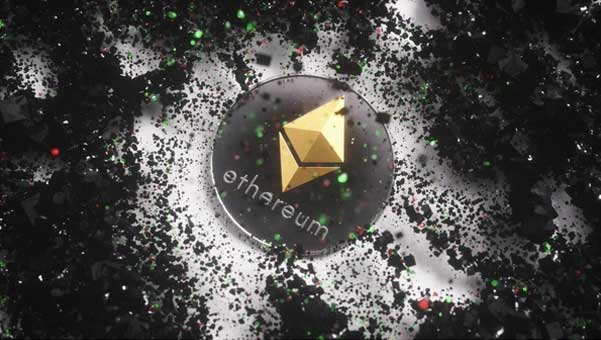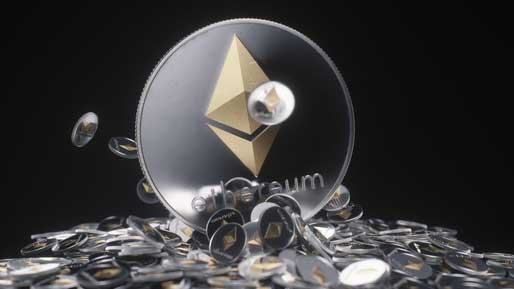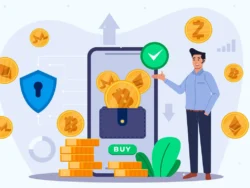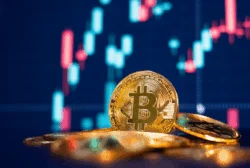Ethereum is a permissionless, trustless open-source platform that allows users to design, create and deploy self-executable programs called Smart Contracts and powerful decentralized applications. Since its inception in 2015, Ethereum has benefitted from strong developer support (the yearly triple digit surge in blockchain careers is a testament to that) and has grown to become the second largest cryptocurrency in terms of Market Capitalization (more than 375 Billion US dollars at the time of writing).
As Ethereum initiates a much-publicized transition from Proof of Work (POW) to Proof of Stake (POS), which will diminish its energy consumption by a staggering 99%, some may be wondering if the time is right for them to jump in. The Price of Ethereum currently stands at 3 200 US Dollars.
There are many reasons why one might want to allocate funds to Ethereum. While this article does not aim to provide investment advice, it will paint a powerful picture and provide enough data to our readers, who will then be able to make an informed decision.
Investing in Ethereum is Smart because
Ethereum is now Smarter, thanks to Oracles

A Revolution took place and the world barely even noticed – this will not last. This revolution took place when the Ethereum Network was granted the ability to communicate with the real world via decentralized Oracles. This newfound ability will obviously boost Ethereum’s utility and have a positive effect on price – for years to come.
Ethereum was, at its inception, a closed system. This means that by itself, Ethereum was not able to access information from the outside world. Needless to say, this intrinsic incapacity to interface and consume data from the real-world truly limited Ethereum’s potential and the utility that could be derived from Smart Contracts and Decentralized applications.
Blockchain Oracles solve Ethereum’s incapacity to communicate with the real-world by positioning themselves as “middleware”, as a layer between the real-world and blockchain networks – Oracles feed or push information from the real world to blockchains (or inversely, they can transmit information from blockchains to the real world). A Blockchain Oracle verifies, queries and authenticates external data sources. Once data points are collected and verified, they are relayed to a blockchain network such as Ethereum, where they are used within applications and smart contracts.
What this means in concrete terms, is that Smart Contracts and Decentralized applications hosted on the Ethereum Network can now communicate with the real world, and leverage data that is collected off-chain. The execution of a smart contract might depend on information that is not readily available on-chain, such as the price of a real-world asset or even the current temperature. Oracles feed smart contracts with the information they require for proper execution.
The fact that Ethereum is now able to interface with the real-world results in a boost of utility and usability – and what we are seeing this year in terms of price action is partly a reflection of this.
Ethereum is the Platform of Choice for
Non-Fungible Tokens (NFTs)

The very existence of Non-Fungible tokens provides a strong argument for the allocation of Resources into Ethereum. Ethereum’s Non-Fungible Token sector is set to experience growth that will provide truly interesting returns to Ethereum Investors – and eye-opening returns for those non-invested and still waiting on the sidelines.
First off, what is an NFT?
A Non-fungible Token is a token that is issued on a blockchain network, such as Ethereum.
What is important to understand when speaking about NFTs, is that their issuance implies specific standards. Standards are sets of rules that non-fungible tokens follow. There are many standards in use today. Examples of such standards include: Ethereum’s ERC721, which is the most widely used standard today, and ERC1155, a multi-token standard which is used to create NFTs and other types of tokens.
These tokens can be linked to digital or physical items. When a non-fungible token issued on the Ethereum blockchain is linked to Art, we have what we call: Crypto Art. When it is linked to Real Estate, we have what we call: tokenized Real Estate. These tokens can be linked to tickets, certifications (for authentication purposes), fashion items and many other physical or digital objects.
Non-Fungible tokens have a myriad of use cases and provide strong support for the notion of an Ethereum Bull Scenario. The NFT sector is growing at a breakneck pace – growing so quickly in fact that even insiders have a hard time keeping up. The sales volume for non-fungible tokens has hit an eyebrow-raising 2.5 Billion US dollars in the first six months of this year, up from a total of 13.7 million US dollars for the entirety of 2020. NFT marketplaces are attracting users and experiencing growth that is making other sectors of the blockchain industry red with envy.
And the great news is that we are still in the early days of Non-Fungible tokens. This is clearly an opportunity for Ethereum investors.
Interoperability and Composability
Support an Ethereum Bull Scenario

Composability and Interoperability are terms that are often used interchangeably by writers who specialize in blockchain technology – as if they had the same meaning.
And therefore, thanks to the publication of articles and papers with poor conceptual starting points, a lot of confusion has come to surround these two terms.
We need to say it loud and clear: Composability is not Interoperability. Interoperability, the extent to which protocols and platforms can exchange data (or in Mr. Buterin’s words, “talk to each other”) and interpret this shared data, is a sine qua none condition for Composability.
One precedes the other: Composability, which can be described as the possibility for developers (and users, through specialized applications) to combine protocols and create new applications in a permissionless manner, is possible only because protocols and platforms are able to “speak to each other” (Interoperability).
Interoperable and Composable Ethereum protocols benefit from different types of synergies:
- Marketing Synergies: When two projects become connected (for example, one project’s token is allowed as collateral on another platform), they enjoy immediate marketing benefits.
- Revenue Synergies: combining projects generates, as one can imagine, more revenue than what the projects could generate on their own. Revenue synergies are powerful incentives for projects to not operate in technological silos and aggressively seek out partnerships.
- Financial Synergies: platforms connected in new products or services unlock liquidity which was out of reach for them when they were operating on their own.
Interoperable and Composable Ethereum protocols and platforms can speak to each other and work with one another: they are “modules” that can be combined (the “Money Lego” approach) in a variety of ways in order to create products and services that did not exist before – creating an untold amount of value for all stakeholders.
We strongly believe that Ethereum’s characteristic Interoperability and Composability provides a very good argument for a methodical Ethereum investment.
Parting Words
Considering all of the above – Ethereum’s newfound ability to interface with the external world via decentralized Oracles, the expected growth of the Non-Fungible Token sector and Ethereum’s Interoperability and Composability – a very strong case can be made for the allocation of a significant portion of one’s resources into Ethereum. Ethereum’s future as a platform for the deployment of Smart Contracts and Decentralized Applications and as a driver of the Economy looks extremely promising, and a patient, long-term investment strategy focused on the second largest cryptocurrency in terms of market capitalization will certainly be rewarded.







